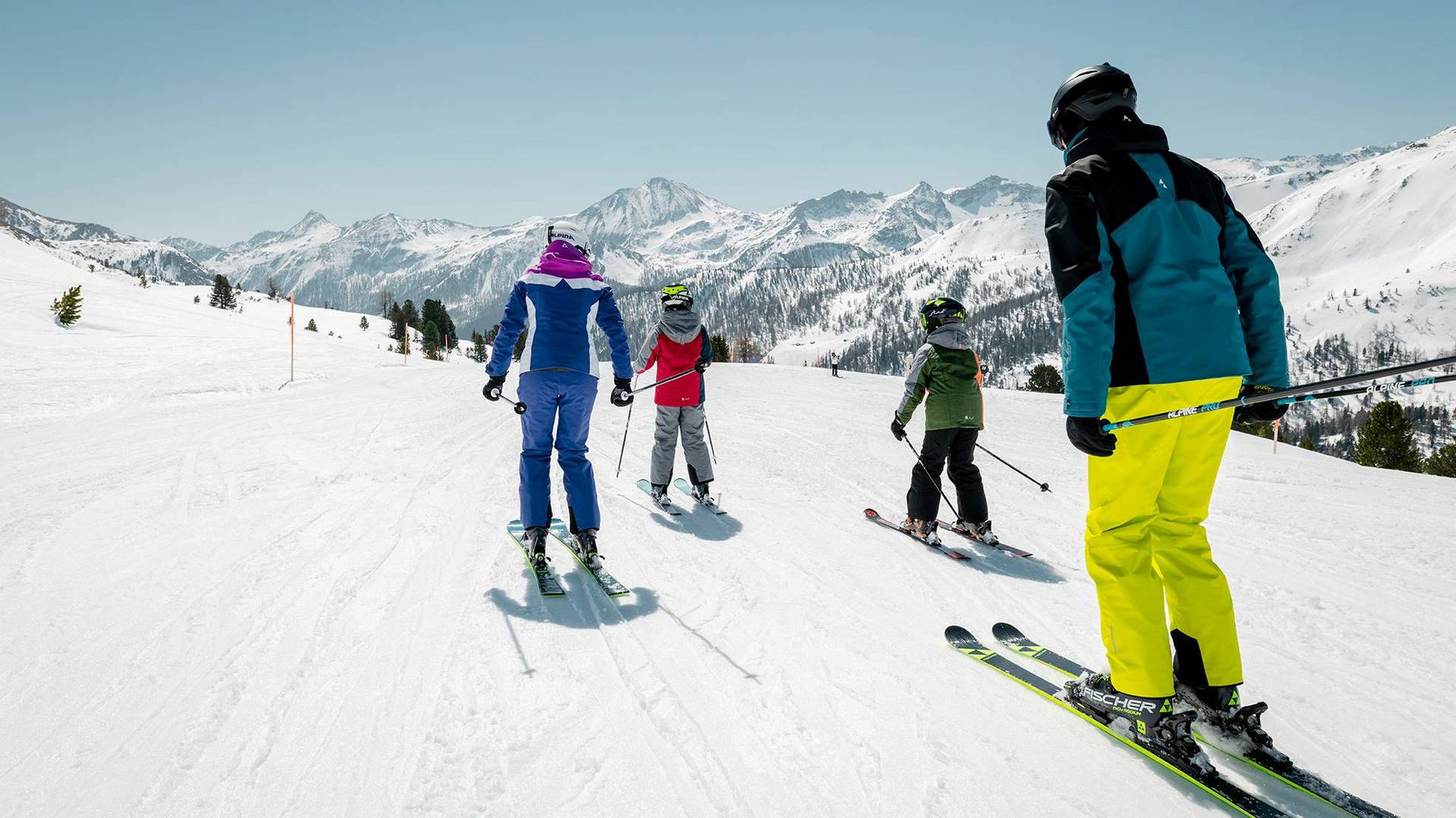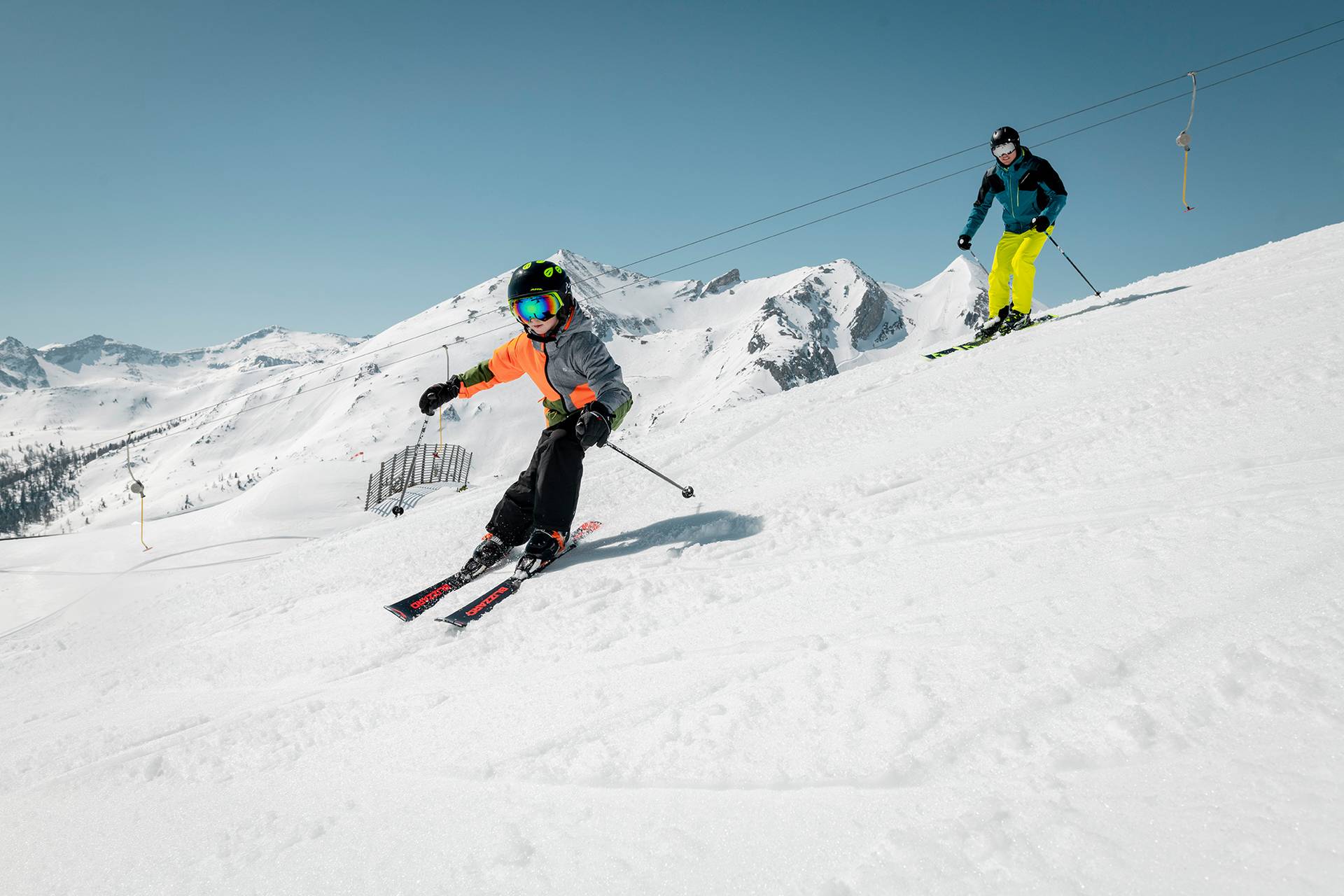
Learning to ski for beginners
With our tips and exercises
SkisInteresting facts

So you finally want to take on the challenge to learn how to ski and to glide down snowy slopes in picturesque winter landscapes? It is never too late to (re-)try this winter sport. Naturally children will learn the technique a little faster and they are a little less fearful than adults, but with our tips and exercises even as an adult you can learn to ski quickly and with lots of fun along the way – without having to do a course. After all, not everyone wants to participate in a lengthy and expensive ski course straight away. With our tips and exercises you can learn to ski as an adult and start to glide down gentle slopes. But, what equipment do you need, which slopes are suitable and how do you master those first turns?
The right equipment
Especially in the beginning it doesn't have to be the top-notch, latest brand equipment. If you have friends, maybe you can borrow their equipment for the first day. Or simply use the Sport 2000 rent ski hire service. You will find Sport 2000 rent partners in almost all major ski areas. Here you can hire well maintained, top quality equipment at favourable conditions. And best of all, skis, shoes and poles will be fitted to your individual needs. In other words, your beginner’s equipment will be matched to your size and weight, so that everything fits perfectly.
You can even hire a ski helmet here, which, while not compulsory for adults, is still recommended for safety reasons. Also remember the following items in your outfit:
- Ski pants
- Ski jacket
- Scarf
- Beanie
- Ski gloves
- Ski socks
- Ski goggles
Basic fitness, warm-ups and stretches before skiing
If you want to learn to ski, you should prepare by exercising in your everyday life. This could be classic endurance sports like running or swimming, or cycling and using the stairs regularly instead of the lift. It is simply important that you have a basic fitness level, so that you can concentrate on the techniques while learning to ski and will not run out of steam too quickly.
Before putting on your skis you should also do some stretches and warm-up exercises to warm the muscles and prevent injuries.
Warm-up exercises before skiing
When skiing, you use almost all muscles in your body. Therefore you should definitely completely warm-up prior to skiing. Effective exercises include:
- Arm rotations (windmills) – in the same and opposite directions
- Trunk rotations – clockwise and counter clockwise
- Squats
- Lunge step (for more stability you can use the ski poles)
Repeat these movements 15 to 20 times in 3 sets. You can do these exercises while wearing your complete ski outfit and boots.

Correctly strapping on the skis
After arriving on the slopes warmed up and with all your gear, it is time to correctly strap on the skis. It is important to make sure that you are in a flat area, not on a slope. Have both stops, which are on the outside of the ski bindings, pointing down to avoid the skis slipping away from you. Lay the skis on the snow, shoulder width apart and parallel to each other, at right angles to the slope. Pick up the poles, clean the snow off the soles of your ski boots and point the tip of the ski boot into the binding of the first ski, before pushing your heel down into the binding. Now you can put on the second ski in the same manner. If there is a slight slope, always put on the lower ski before the upper ski.
Learning to ski for beginners – practice on the flats first
To get a feeling for the skis and the gliding motion, the following exercises are very helpful: